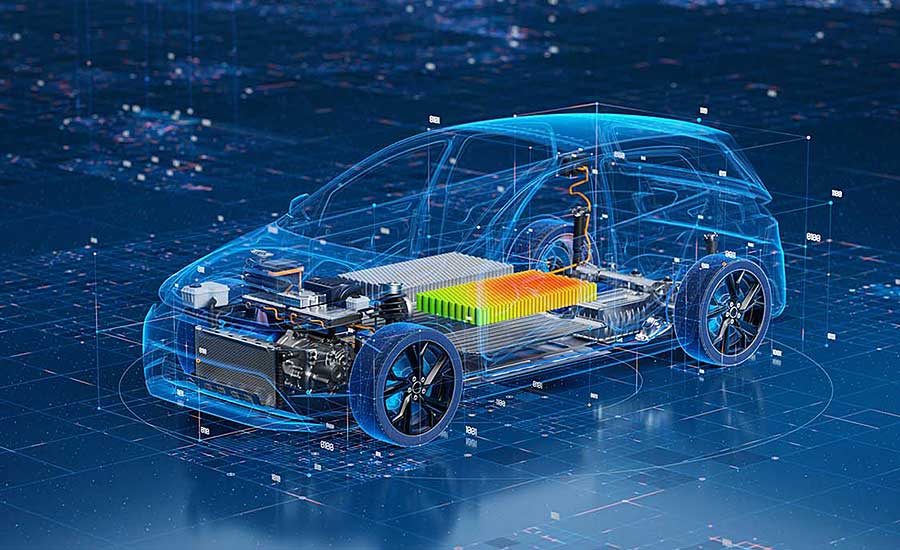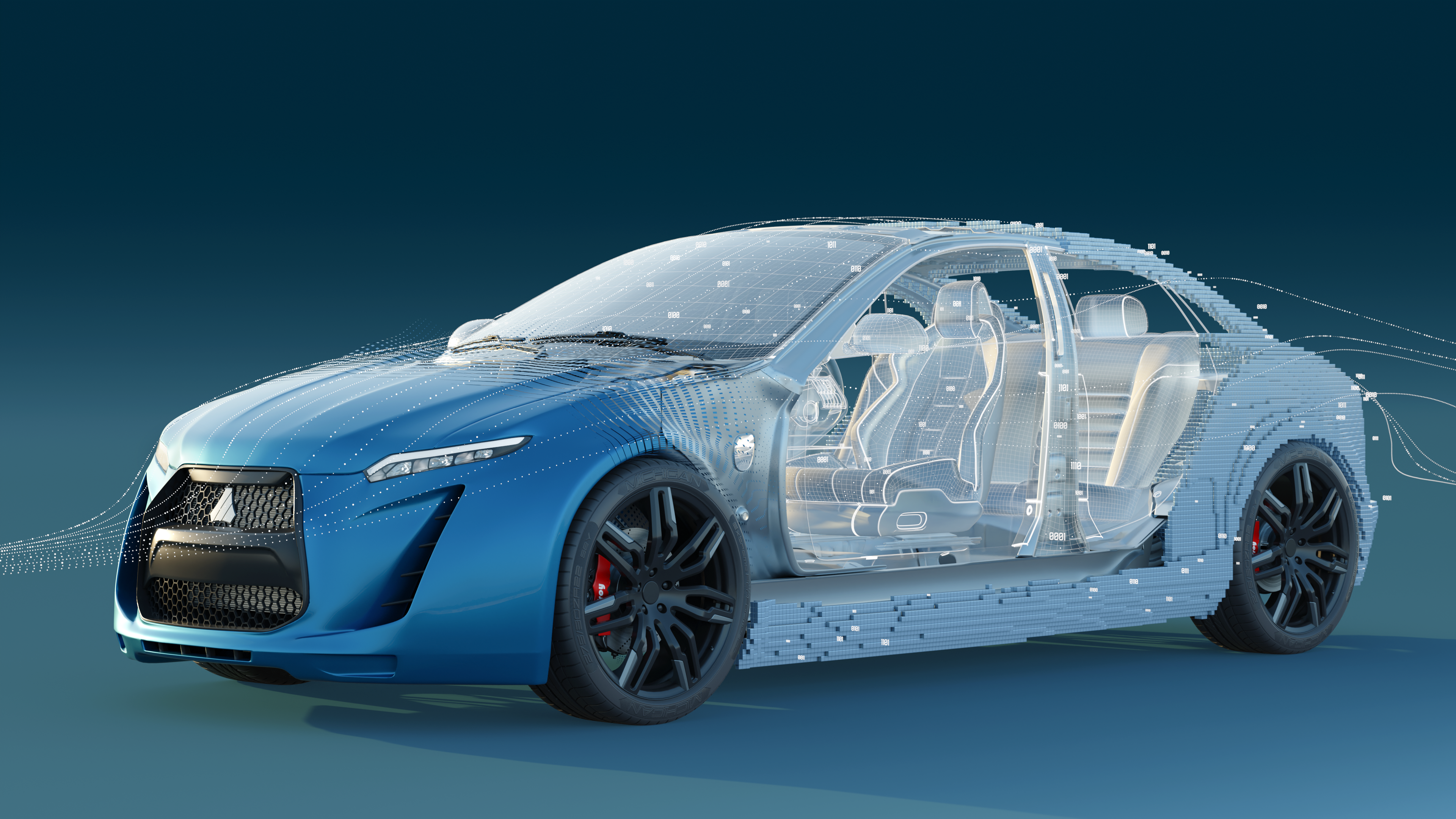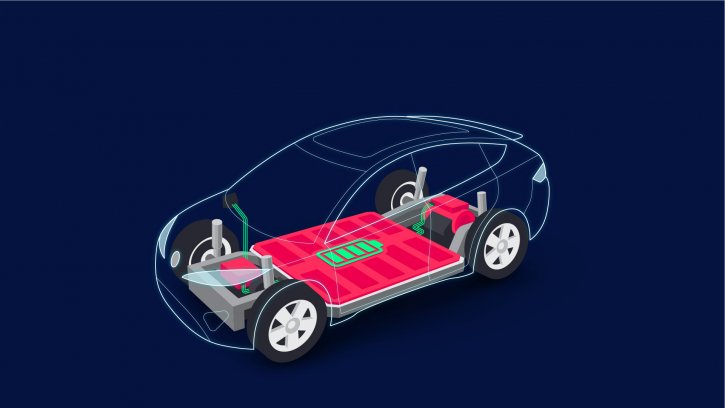The automotive world is stepping on the gas, charging towards a future of electric vehicles. As the pursuit of efficiency intensifies, one concept is riding shotgun; light-weighting. This buzzword describes a simple reality: the lighter the car, the less energy needed to propel it. Embracing everything from carbon fiber construction to minimalist interior design, the light-weighting trend could be the key to unlocking optimal electric vehicle efficiency. Buckle up, it’s time to investigate.
The Concept of Light-weighting

Light-weighting, simply put, is the process of reducing a vehicle’s weight to improve efficiency and performance. Think of an elite runner stripped down to featherweight shoes and aerodynamic clothing, gravitating towards the finish line with ease. That’s the concept. Only, the racetrack is our highways and city streets, and the runners are our means of transportation.
Now, let’s swap the image of a slim, mean, running machine with the image of a sleek, cutting-edge electric car. The science is largely the same. The spirited notion of light-weighting manifests itself into reality through various means, including the use of advanced materials like high-strength steel, aluminium, magnesium or carbon fibre; the development and adoption of less bulky powertrains and components; and the refinement of design methodologies that emphasize efficiency.
Over the years, the automotive industry has been a test-bed of material science and engineering, combining innovative concepts and processes all with the aim of shaving off those critical kilograms. But this isn’t merely a game of numbers on a scale. How the weight is taken off, and from where, plays a big role. It’s a holistic approach that often means rethinking design architectures and employing innovative manufacturing methods.
Whether it’s the chassis, the body, the powertrain or the interiors, opportunities for light-weighting are lurking everywhere. It’s a continued quest to make the atoms in a car work smarter, not harder. A substantial chunk of automotive research and development money is funnelled into this pursuit, investigating materials and structures that can maintain or even increase vehicle strength, while weighing significantly less.
But cars aren’t just dominated by physics, they’re also about the human experience. So, light-weighting doesn’t just revolve around shedding pounds. It’s about balancing the essential comforts with the relentless pursuit of efficiency. It’s a technological ballet, performed in the world’s high-tech labs and design studios.
At the core, the real motive of light-weighting is to help electric vehicles achieve the optimum equilibrium of performance, efficiency, safety, and affordability. It’s the age-old quandary of having your cake and eating it too, only now the cake is lighter, and perhaps, a little tastier as well.
Impact of Light-weighting on Electric Car Efficiency

As we delve into the benefits of light-weighting on electric car efficiency, it’s easy to get lost in the technical details. However, the crux of the matter is deceptively simple: the lighter the car, the less energy it requires to move. So, strip away unnecessary pounds and an electric vehicle (EV) will go further on a single charge, making it more efficient and therefore more appealing to consumers.
The concept is easy to grasp but the execution is a lot trickier. Automotive engineers are constantly tweaking car designs to pare down needless weight. They’re squeezing out each and every extra ounce, all without compromising safety, performance, or comfort. The result is vehicles that are more efficient, all thanks to the simple concept of light-weighting.
Light-weighting has a huge impact on a vehicle’s efficiency, but it’s particularly vital when it comes to EVs. This is largely due to the nature of batteries, the core component of any electric vehicle. They’re heavy and they drain power. The less weight a battery has to lug around, the longer its charge will last.
Numerous studies support this logic. One research conducted showed that for every 10% reduction in vehicle weight, energy consumption can be cut by 6-8%. That’s not an insignificant figure, especially when we’re talking about extending an EV’s mileage on a single charge.
Furthermore, lighter electric vehicles aren’t just advantageous in terms of energy consumption. They also offer better acceleration. Performance is an essential characteristic for many consumers. A quick, agile car can be as vitally refreshing to the driving experience, almost as much as an impressive electric mileage.
Notably, light-weighting also leads to a virtuous circle of efficiency. A lighter car requires a smaller, less powerful battery, which in turn weighs less, making the car even lighter and therefore more efficient. This cascading effect underpins the potential of light-weighting in enhancing the range and feasibility of electric vehicles.
So, in the grand scheme of things, light-weighting is an essential aspect to focus on, to reach the goal of producing more efficient, cost-effective, and sustainable electric cars that could help shift the balance from gasoline-powered vehicles. Understanding its impact on EV efficiency will also spur newer, more innovative solutions in the field.
Current Light-weighting Innovations

The frontier of vehicle light-weighting innovation blazes with ingenuity. Manufacturers are thinking out of the box, throwing convention to the wind, and embracing wild-eyed concepts in the quest for more efficient electric vehicles.
Think carbon fiber composites, my friends. Cars traditionally rely on hefty metals, but carbon fiber offers high strength-to-weight ratios being around half the weight of steel but up to five times stronger. No wonder a brainier breed of EV makers are smitten with this material. Look at BMW’s i3 for instance. The passenger cell of this friendly-faced electric hatchback gets its incredible lightness from a composite reinforced with carbon fiber.
And just when you thought you’d heard the last word in lightweight awesomeness, up pops the case of aluminum. Being a third the weight of steel, it’s attracting plenty of admiring glances from EV engineers. From body parts to drivetrain components, aluminum is proving to be a game-changer, playing lead roles in vehicles such as Tesla Model S and the Ford F-150.
Manufacturers are not merely stopping at high-tech materials but they are also using new manufacturing processes to make cars lighter. We’re talking about “hot stamped steel” here, which is essentially super strong steel that can be made thinner and consequently lighter. Companies like ArcelorMittal are leading the way in this field.
Then there’s titanium. It’s carving out a niche for itself in EVs because it’s strong, light, and resists corrosion better than most materials. A fine example of its use can be seen in the Tesla Model S, where titanium shields protect the underbody battery.
Ever thought about magnesium for car parts? Probably not. But automobile designers have. This alloy is 75% lighter than steel and 33% lighter than aluminum. Volkswagen uses magnesium in its seats, chassis and other components; other manufacturers are sure to follow suit.
So, there it is. Today’s light-weighting innovations run the gamut from re-inventing material use to re-imagining how cars are built. The objective is clear: make electric vehicles more efficient without sacrificing safety or performance. Lean machines may soon rule our roads. And we’d be all the better for it.
Challenges and Solutions for Light-weighting

Reducing the weight of electric vehicles isn’t just a matter of ditching unnecessary extras or reducing size. It requires a clever dance between material engineering, design innovation, and cost balancing. Striking this balance is where the crux of the challenges lies.
The biggest hurdle in the journey towards light-weighting electric vehicles is indeed the steep costs associated with the material swaps. For instance, substituting steel and iron with lighter materials like carbon fiber and aluminum may significantly decrease the weight, but it can drastically increase manufacturing costs. To crack this nut, more cost-effective production methods for such lightweight materials need to be perfected.
Structural integrity is another serious concern. Lightweight materials constrain the strength and safety aspect of the car. Running the tightrope between weight reduction and maintaining structural rigidity is something manufacturers constantly wrestle with. This is especially significant given that a super-light vehicle may not necessarily offer sufficient crumple zones or structural rigidity in case of an accident. There’s a need for more advanced safety technologies and simulation tools to overcome this challenge safely.
Another obstacle is the transition and retooling process. A pronounced shift to new light-weighting processes would require extensive relearning and possibly, some amount of capital investment for tooling. This could cause serious disruptions in the short term, but such investments are bound to pay off in the long term, leading to not only lighter but also more efficient electric vehicles.
Cue in the solutions. Advanced high-strength steels (AHSS) offer a right start. This ‘muscle without mass’ material, lighter yet stronger than the conventionally used steel, is a go-to solution for many manufacturers. Increased reliance on AHSS can help manufacturers strike a balance between weight, cost, and safety.
Furthermore, the diversification of materials used in manufacturing can play a crucial part. A judicious mix of composite materials, plastics, AHSS, and alloys in the body structure can arguably lead to significant weight reduction while maintaining safety standards.
Emerging 3D printing technologies are also showing promise in creating lightweight structural parts for EVs. As this technology evolves, so will the opportunities for being selective about where and how much material is used, leading to significant weight reductions.
Ultimately, it’s about shifting the gear towards smarter designs and not just lighter materials, in association with innovations in material sciences, that can help overcome the light-weighting challenges. In a race to efficiency, every gram counts and every solution matters. The industry, persisting through these complexities, is steadily moving towards creating a lighter and more energy-efficient fleet of electric vehicles.
Future Trends in Automobile Light-weighting
As the pages of time flip steadily into the future, we behold potential trends that may reform the concept of automobile light-weighting. Already, engineers are tipped as the Picassos of the modern automobile world, creating masterpieces from an intriguing mix of stronger and lighter materials.
The foreseeable industry trend is the rise in the use of advanced high-strength steel (AHSS). The AHSS isn’t any regular Joe from the steel neighborhood; it’s the kind of steel that promises strength that’s double or triple of regular steel, while also giving a generous cut in the weight department. The spotlight is hot on AHSS as automobile manufacturers recognize the benefits it potentially offers to electric vehicles (EVs). Plus, given that steel is infinitely recyclable, AHSS could boost sustainability goals in the industry.
Composites also have a spot on the future map. Talk of carbon fiber, fiberglass, and other composite materials sounds like music to the ears of the EV arena. These composites demonstrate high strength-to-weight ratios and possible adaptability for future EVs. They could even knock on the doors of mass-market EV territory, given the right mix of technology, cost, and supply chain enhancements.
3D printing is one of those techs that seemed to descend straight from a Sci-Fi movie. However, it’s making itself comfortable in the auto light-weighting scene, facilitating the fabrication of complex designs that were previously unthinkable. Expect innovative vehicle components with spiral internal cooling ducts, or lattice structures for optimal strength distribution, all thanks to 3D printing. As this technology continues to evolve, we can anticipate a surge in its adoption for light-weighting processes.
Lastly, the trend towards integral construction could be game-changing. The idea here is to reduce the number of parts, making several components unnecessary by designing single pieces that perform multiple functions. Not only does this tout considerable weight savings, but it also simplifies the production process and reduces manufacturing costs.
So, peeking down this futuristic lane, the signs are clear; the drive to achieve better EV efficiency through light-weighting won’t be running out of gas anytime soon. You’ll see these babies going on a slim-fast diet while somehow becoming Hulk-strong, all in the pursuit of electric efficiency. But aren’t we all eager to witness the exciting transformations this journey will offer.
FAQs
Why is light-weighting crucial for electric cars?
How does light-weighting affect electric car efficiency?
What materials are used for light-weighting in electric cars?
Conclusion
Weight reduction in electric cars is an ingenious attempt to boost efficiency and range. Combining improved design, advanced materials and smart assembly tactics, light-weighting truly holds the promise of revolutionizing the EV industry. However, the challenge remains to balance performance, cost and safety. Success lies not only in making lighter vehicles but ensuring they deliver on performance and consumer expectations. The journey toward lighter, efficient electric cars isn’t going to be easy, but the rewards promise to be game-changing.
